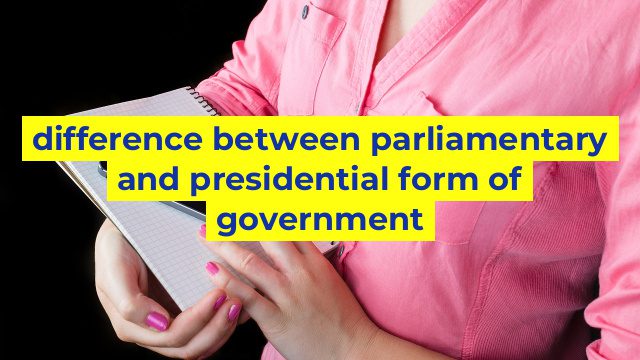Parliamentary vs Presidential Form of Government: What’s the Difference?
When it comes to the system of governance, there are two major models that are followed around the world. These models are parliamentary and presidential forms of government. While both systems have their advantages and disadvantages, it is crucial to understand the differences between the two before making any conclusions.
What is a Parliamentary Form of Government?
A parliamentary form of government is one in which the executive branch of the government is accountable to the legislature. The head of the government, known as the Prime Minister, is usually a member of parliament and is elected by the members of parliament themselves. The Prime Minister, along with other ministers, form the cabinet. The cabinet is responsible for making decisions on behalf of the government and is accountable to the parliament.
In a parliamentary form of government, the parliament is the highest authority, and the Prime Minister and the cabinet are accountable to it. The parliament can remove the Prime Minister and the cabinet through a vote of no confidence. This system is prevalent in countries such as India, Australia, and the United Kingdom.
What is a Presidential Form of Government?
A presidential form of government is one in which the executive branch is separate from the legislature. The President is the chief executive and is elected separately from the legislature. The President appoints their cabinet, and the cabinet is responsible for making decisions on behalf of the government.
In a presidential form of government, the President is the highest authority, and the cabinet is accountable to it. The President cannot be removed by a vote of no confidence. This system is prevalent in countries such as the United States, Brazil, and France.
Comparing Parliamentary and Presidential Forms of Government
One of the significant differences between the parliamentary and presidential forms of government is the separation of powers. In a parliamentary system, the executive is accountable to the legislature, while in a presidential system, the executive is separate from the legislature.
Another significant difference is the ease of passing legislation. In a parliamentary system, the Prime Minister and the cabinet work closely with the parliament to pass laws quickly. In contrast, in a presidential system, the President has to work with the separate legislature to pass laws, which can take time.
Lastly, in a parliamentary system, the government can be easily removed through a vote of no confidence, leading to stable governments. However, in a presidential system, the government cannot be removed through such a vote, leading to less stable governments.
Conclusion
Parliamentary and presidential forms of government have their pros and cons, and no system is perfect. It is crucial to understand the differences between the two before drawing any conclusions. Factors such as stability, efficiency, and accountability should be considered when deciding which form of government to adopt.
Table difference between parliamentary and presidential form of government
| Aspect | Parliamentary Form of Government | Presidential Form of Government |
|---|---|---|
| Head of State | Monarch or President as a Ceremonial Head of State | President as both the Head of State and Government |
| Executive branch | Formed by the parliament, led by the Prime Minister and the Cabinet | Separate from the legislative branch, headed by the President and supported by the Cabinet |
| Legislative branch | Formed by the parliament, consisting of elected representatives | Separate from the executive branch, consisting of elected representatives of the Congress or National Assembly |
| Relationship between the executive and legislative branches | The executive branch is responsible to the legislative branch, and the Prime Minister or Cabinet can be removed by a vote of no confidence | The executive branch is separate from the legislative branch, and the President does not have to depend on the support of the Congress or National Assembly to remain in power |
| Term of Office | The Prime Minister and Cabinet serve for as long as they have the support of the majority in the parliament, and elections are held periodically | The President serves for a fixed term of office, usually four or five years, and can be re-elected for another term |
| Role of the Judiciary | The judiciary holds a separate authority and is responsible for interpreting the law | The judiciary holds a separate authority and is responsible for interpreting the law and checking the power of both the executive and legislative branches |


